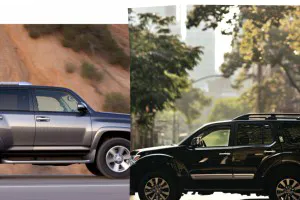Warranties help ensure that your brand new car doesn’t start falling apart the moment it rolls out of the dealership. They can also be a point of pride for manufacturers, guaranteeing the quality of their cars either by remaining problem-free for the duration of the warranty period, or by taking care of any problems that do occur at no cost to you.
Once you dive into the details about warranties, though, they can get pretty complicated. What’s the difference between a manufacturer and extended warranty? Or a manufacturer and powertrain warranty? Exactly what do each of these warranties cover, and for how long? We’ve unpacked all of this for you, so read on to find out.
What is a New Vehicle Limited Warranty?

Every new vehicle on the market today comes with a warranty against defects in manufacturing and workmanship. Other names for this are a factory warranty, basic warranty, bumper-to-bumper warranty, or manufacturer’s warranty.
A vehicle is a significant investment. Buyers want to be sure that they will not have to pay for expensive repairs on a brand new car. The new vehicle limited warranty is how manufacturers guarantee customers that this will not happen. Sometimes a manufacturing defect does slip through their quality control at the factory. In this case, they will repair the problem at no cost to you, as long as this warranty covers it. In most cases, it will.
What’s the Difference Between a Warranty and a Limited Warranty?
A full warranty means that the manufacturer will repair or replace a defective product no matter what, except for normal wear and tear. A limited warranty places restrictions on the warranty for situations it will not cover.
Auto manufacturers generally offer a limited warranty. This gives them a way out of covering failures resulting from a lack of maintenance, racing, or abuse. Legally, manufacturers can place any restrictions they want on a limited warranty. In practice, they will typically cover any reasonable defect or failure that occurs within the warranty period. While it costs them money, it keeps the customer satisfied, which means they may buy another car from them later, or recommend this manufacturer to friends and family. Otherwise, customers will flock to other manufacturers who do offer a robust warranty.
What’s Not Covered Under a Manufacturer’s Warranty?
A manufacturer’s warranty typically does not cover wear-and-tear and routine maintenance items. It also doesn’t cover uses and conditions outside what the manufacturer designed the car to handle. Let’s break down these situations.
Wear-and-Tear and Routine Maintenance
Every vehicle requires regular maintenance. Items like oil changes and tire rotations are typically not covered under warranty. These are not defects with the vehicle. Nor are brake pads that wear out under normal driving conditions. If they wear out in just 5,000 miles that could be covered, but not at 50,000 miles.
A few premium manufacturers may choose to include maintenance for the early life of the vehicle at no extra charge. BMW, for instance, has included BMW Ultimate Care on all of their cars sold after 2017, covering common maintenance items for three years or 36,000 miles, whichever comes first. But this is a separate offering from the warranty, don’t confuse the two. Also, not all maintenance items may be included. BMW Ultimate Care, for example, does not include brake pads, even though they are a standard wear item.
Use and Abuse
If you put your car through punishing conditions that the manufacturer never designed your car to handle, they are not obligated to honor your warranty. A warranty is not a guarantee that your vehicle will stand up to anything you can throw at it. According to Car Talk, potential exclusions include:
If you put your car through punishing conditions that the manufacturer never designed your car to handle, they are not obligated to honor your warranty. A warranty is not a guarantee that your vehicle will stand up to anything you can throw at it. According to Car Talk, potential exclusions include:
- Abuse of the vehicle: Your car is made to handle a certain amount of regular wear and tear. But running over curbs, parking “by ear,” driving too fast in too low a gear, and other abuse pushes the car beyond what it was designed to handle. That is not the manufacturer’s fault.
- Neglect of routine maintenance: When making a warranty claim, the dealer will want to see proof that you have followed the manufacturer’s recommended maintenance schedule. This includes everything from routine oil changes to replacing your timing belt on schedule. If they designed the car to get oil changes every 5,000 miles, and your engine dies after 30,000 miles with no oil changes, they are not obligated to cover it, even if it is within the warranty period.
- Racing or off-roading: These are extreme driving conditions that, once again, the manufacturer did not design your vehicle to handle. Although a Toyota 86 is right at home on the race track, and a Jeep Wrangler can handle easy off-road trails straight off the showroom floor, a manufacturer may deny warranty claims on vehicles driven this way.
- Natural disasters, such as flooding or fire: Top Gear’s Toyota Hilux notwithstanding, no matter how tough a car may be built, it’s not designed to handle being submerged underwater, set on fire, or other natural disasters. This is a situation that comprehensive insurance should cover, however.
- Certain aftermarket modifications: Manufacturers design cars to work the way they build them. Modifications like a different engine tune or upgrading the suspension could make these parts work outside the manufacturer’s parameters. As a result, they may deny warranty coverage if the aftermarket parts could have caused the failure.
It’s important to note that such a denial can only apply to failures that could be related to the aftermarket parts. Even if you are denied coverage for an engine failure because of an aftermarket tune, a failure in your infotainment system should still be covered, thanks to the Magnuson-Moss Act. Those systems are not connected, and it is impossible for an engine tune to damage your infotainment system.
It is rare for a manufacturer to completely void the entire warranty. Most often they will simply deny warranty coverage for a particular claim for one or more of these reasons. It’s not impossible, though. In racing circles, there have been stories of a manufacturer representative infiltrating an autocross event, taking pictures of their cars participating in the event, and voiding those warranties because they were seen racing. Most manufacturers have better things to do with their time, but it could happen.
What is the difference between a manufacturer warranty and a dealer warranty?
The difference is who provides and supports the warranty – the company that built your car, or the dealer where you bought it.
A manufacturer warranty is provided by the company that makes your car. If you buy a Honda, for example, it is Honda that guarantees that the car is free of defects, and will repair any covered problems that pop up. That means you can buy your car in Massachusetts, drive to California, and a local dealer in California will honor your warranty and make the repairs. The cost of this warranty is typically included in the purchase price.
Dealer warranties are typically provided and supported by the dealer where you buy your car. These typically go above and beyond the manufacturer warranty, such as some extended warranties and service contracts. These warranties usually cost extra, although the dealer may add this cost directly to your financing so it seems like it’s included with the car. Any warranty on a used car may be a dealer warranty as well. The terms and conditions of dealer warranties vary tremendously, so be sure to read the fine print and understand exactly what is and isn’t covered, especially before spending money on one.
How Long Is a Car Warranty?
A manufacturer warranty typically lasts for three years or 36,000 miles, whichever comes first. This varies from one manufacturer to another, however. Hyundai, Kia, Genesis, and Mitsubishi offer bumper-to-bumper warranties lasting five years or 60,000 miles, whichever comes first. These are currently the best in the industry. Many cars also come with a powertrain warranty, which covers the engine, transmission, and other driveline items for a longer period of time than the basic warranty.
Regardless of how long your factory warranty lasts, you can always lengthen it with an extended warranty, which we’ll get into later in this article.
What is a Powertrain Limited Warranty?
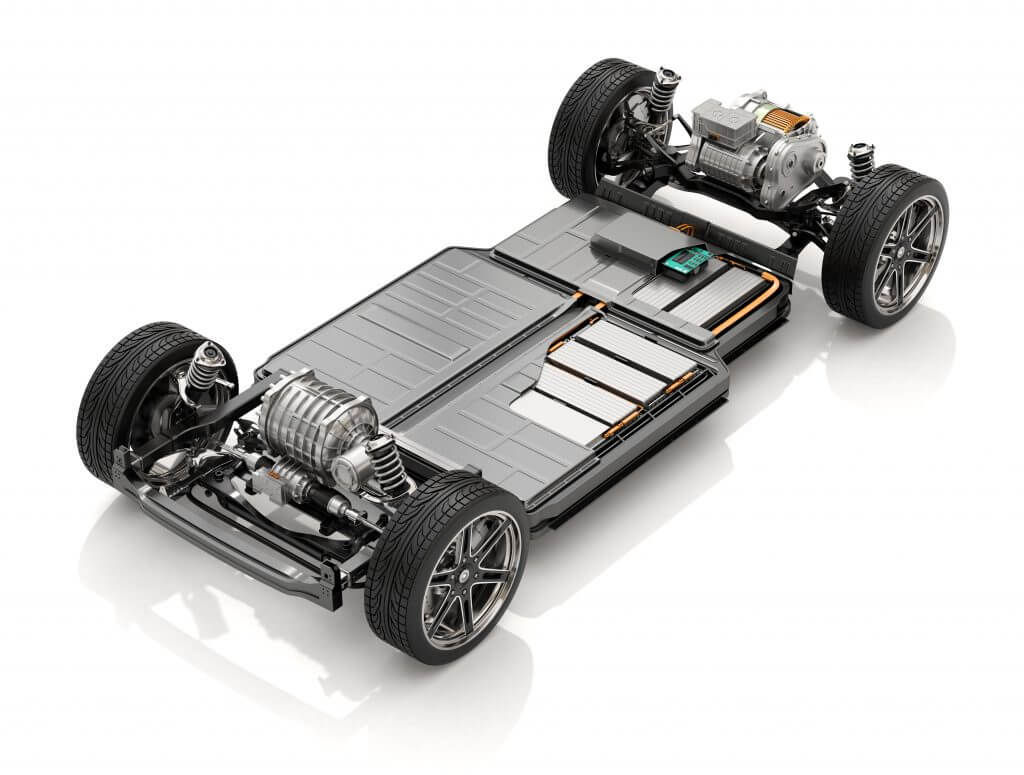
While a basic warranty covers almost the entire car, a powertrain warranty only covers the parts of the car that make it move down the road. While the manufacturer warranty includes just about everything, powertrain warranties often last longer, continuing to protect your powertrain for sometimes years and tens of thousands of miles after your basic warranty expires.
What is covered under a powertrain warranty?
The powertrain warranty includes the engine, transmission, axles, differentials, transfer case (if equipped), and internal components. These are all expensive parts, so most manufacturers give you peace of mind by covering them for a longer period of time than their basic warranty.
How long is a powertrain warranty good for?
The average powertrain warranty lasts for five years or 60,000 miles, whichever comes first. This is much longer than the average manufacturer warranty of three years or 36,000 miles. Once again, Hyundai, Kia, Genesis, and Mitsubishi offer the best powertrain warranties, lasting ten years or 100,000 miles, whichever comes first.
What is the difference between a powertrain warranty and a drivetrain warranty?
While the powertrain is everything that makes the car move, drivetrain warranties often exclude the engine, covering only the transmission, differentials, axles, etc. These may be more affordable than a powertrain warranty, but only because they don’t cover the engine, one of the most expensive parts of your car to repair or replace.
When we get into extended warranties, many of them offer a drivetrain warranty, rather than a powertrain warranty. These may sound like the same thing, but they’re not. As long as you’re aware of this difference, you may wish to consider a drivetrain warranty under the right circumstances. If you own a car with an engine that’s known to be quite reliable, but a transmission that’s prone to problems, a drivetrain warranty might make the most sense in your case.
Are powertrain warranties worth it?
The definitive answer is “it depends,” based on how reliable your powertrain is known to be, and the cost of the warranty. The powertrain warranty included with your car is absolutely worth it, because it’s included in the price of the car. An extended powertrain warranty might be worth it if your car is known to have engine problems. On a car that’s known to have a good, reliable driveline, it might not be worth it. You might save money by rolling the dice and not buying an extended powertrain warranty.
Another consideration is how much you can afford if powertrain components fail out of warranty. If you have a lot of money in savings, it might not be a hardship for you to suddenly replace your transmission if it fails. But, it definitely would be for someone who can’t afford such an expensive, sudden repair out of pocket. In this case, an extended powertrain warranty would be cheap insurance against this situation.
What is a Federal Emissions Warranty?
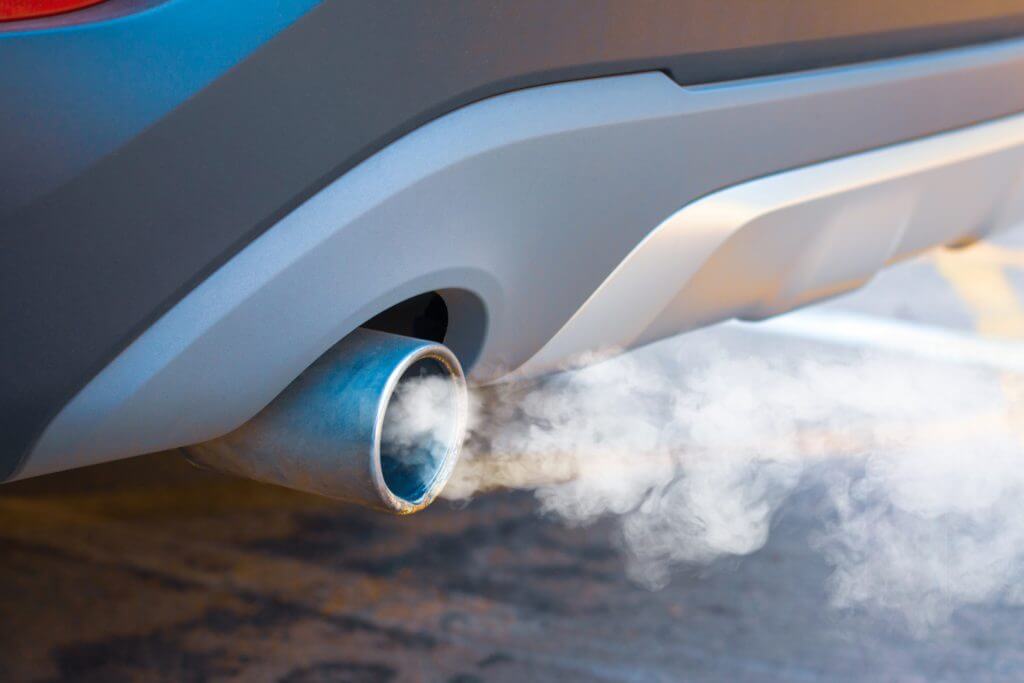
As part of the Clean Air Act, the EPA requires manufacturers to guarantee that vehicles and their components will pass an emissions test. If they don’t, the manufacturer is responsible for covering the cost of any repairs needed to pass emissions.
There are two parts of the Federal Emissions Warranty: the Performance Warranty, and the Design and Defect Warranty. The Performance Warranty guarantees the car’s performance in emission tests. The Design and Defect warranty guarantees the individual parts of your car’s emissions system. If your car fails emissions because of a bad catalytic converter, its replacement is covered under the Performance Warranty. If the replacement catalytic converter is also bad, it is covered under the Design and Defect warranty. The end result is guaranteed coverage throughout the entirety of the warranty period, which is two years or 24,000 miles for most components of the emission system.
What is the federal emissions warranty for catalytic converters?
A few specific emission components – the catalytic converter, the engine computer, and the on-board diagnostics system – are covered for eight years or 80,000 miles, whichever comes first. Similar to a powertrain warranty covering the most expensive parts of the powertrain, these are the most expensive components of the emission system, and are covered for a longer period of time as a result.
What is the warranty on a replacement catalytic converter?
The EPA requires a new aftermarket replacement catalytic converter to come with a five year or 50,000 mile warranty on the outer shell and end pipes, and that it will meet EPA performance standards for 25,000 miles. This is shorter than the warranty required for auto manufacturers, but aftermarket parts are usually less expensive as well, so it may be worth saving some money despite the shorter warranty.
You can also buy a used catalytic converter, which the EPA requires to meet their performance standards at the time of sale. In other words, it is required to function properly at the time you buy it. But there is no required guarantee that a used catalytic converter will continue to work in the long term. Unless you’re particularly strapped for cash, it’s usually best to buy a new catalytic converter.
What is a California Emissions Warranty?
California has higher emission standards and warranty requirements than the EPA. All emissions-related parts must be covered for three years or 50,000 miles, whichever comes first. A vehicle-specific list of more expensive emissions related parts is covered for seven years or 70,000 miles. The EPA requirements for an eight year or 80,000 mile warranty on specific parts still applies, as well.
These longer warranties may apply to you even if you don’t live in California. Thirteen states have adopted California’s higher emission standards, including these warranty periods. They are:
- Colorado
- Connecticut
- Delaware
- Maine
- Maryland
- Massachusetts
- New Jersey
- New York
- Oregon
- Pennsylvania
- Rhode Island
- Vermont
- Washington
- Washington, DC
How do I know if my car is California or federal emissions?
Every vehicle has an emission label somewhere under the hood. If this label says that the vehicle conforms to California regulations, is legal for sale in California, or has “50-state emissions,” it may be sold in California. A new car, which California defines as having under 7,500 miles, may also be brought into and registered in California from a state that follows the lower EPA standards, because it was designed to meet California’s higher standards. If the label says it conforms to federal or EPA regulations, or that it has “49-state emissions,” it can not be sold or registered in California. There are a few limited exceptions to this rule.
What is a Rust Perforation Limited Warranty?
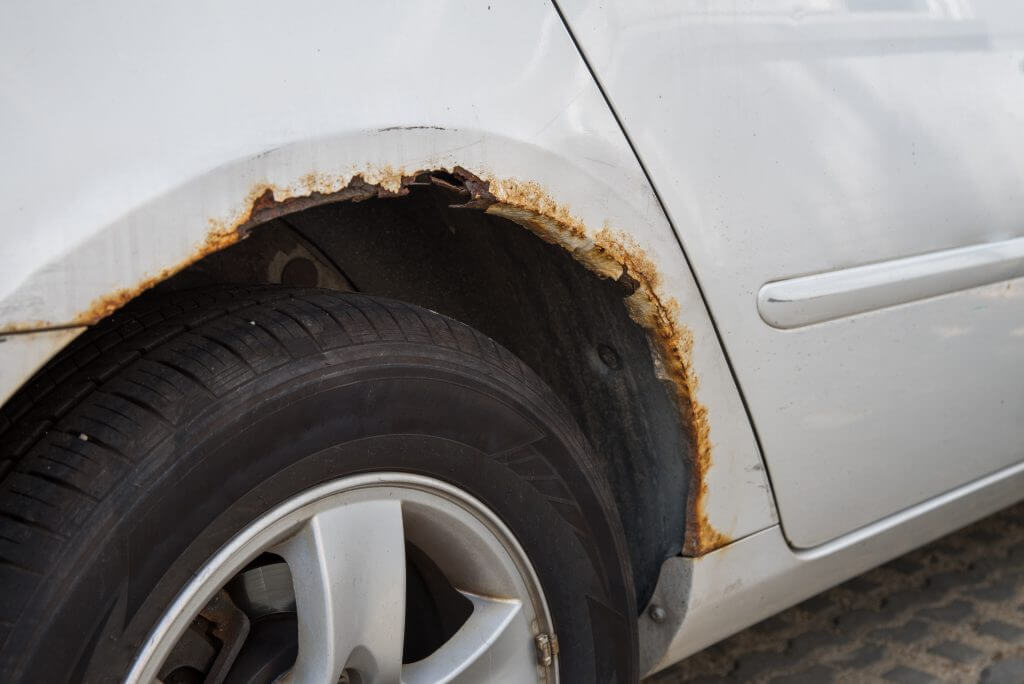
A Rust Perforation Limited Warranty, also known as a Corrosion Warranty, covers repairs to metal that holes have appeared in due to rust.
It is important to note that it does NOT cover conditions like surface rust, or paint damage due to rust underneath. This warranty only applies if there is a hole all the way through the metal. Many rust perforation warranties also only cover corrosion caused by defects in material or factory workmanship under normal use and maintenance. It would not cover rusted body parts due to crash damage, for example, even if the panel has rusted all the way through.
What problems does rust cause?
The most obvious problem is cosmetic damage. Rust itself is ugly, and it can also cause paint to bubble and flake off metal rusting beneath. It can also damage structural components, from suspension parts to the frame itself. In 2012, Toyota recalled 150,000 Tacoma pickup trucks made between 2001 and 2004 because their frames were particularly vulnerable to structural failure due to rust. These trucks were at risk of literally breaking in half at the frame.
In the case of perforation, these holes allow the outside elements to get inside of metal parts that were not designed to handle them. This can significantly accelerate the corrosion process. Holes could also allow noxious exhaust fumes to enter your vehicle, causing a bad smell at best and respiratory problems at worst.
Most rust problems are not this catastrophic, but in areas that treat roads with salt during the winter, it is important to watch for rust underneath your car. Metal brake lines can rust out and fail. Even if parts don’t fail, nuts and bolts can rust together. Having lived in New England most of my life, I can confirm that 90% of any repair job under the car is fighting to take the rusted parts off. All it takes is one rusted or broken bolt to turn a half hour repair into a three day ordeal.
Why is surface rust not covered under warranty?
Corrosion and rust perforation warranties look great on paper, but the truth is that rust that qualifies for coverage is highly unlikely to develop during the warranty period. It takes a while for surface rust to corrode a hole through the metal, so even if surface rust forms during the warranty period, it may not rust through until after it expires.
In reality, it’s best to repair rust as soon as it forms, rather than to wait for holes that qualify for the warranty. The affected area is usually much larger than what you can see on the surface. The longer you let it go, the worse the damage will be.
Is rust a manufacturing defect?
If rust forms as a result of improper painting or assembly, it could be the result of a manufacturing defect. But rust that forms due to exposure to chemicals or exterior elements, such as road salt, is not considered a defect. All metal alloys containing iron, including steel, are vulnerable to rust, no matter what they are or how they’re used.
What is a Battery Limited Warranty?
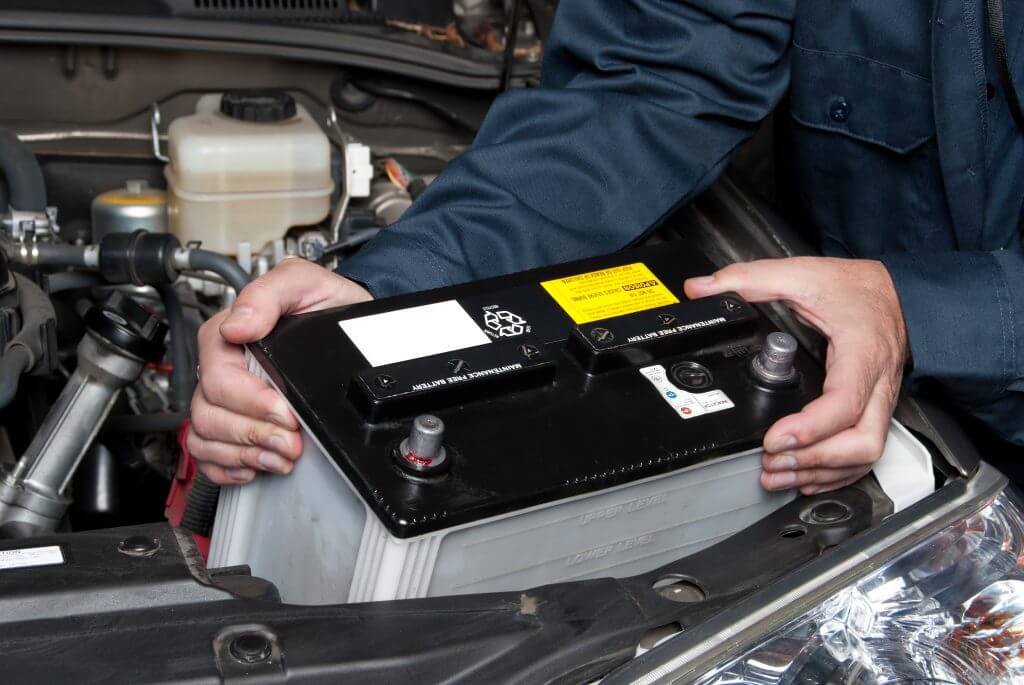
Some auto manufacturers offer a Battery Limited Warranty in addition to a basic and powertrain warranty. This guarantees that the battery that came with the car will be good for a certain time or mileage. Other manufacturers simply include the battery in the bumper-to-bumper warranty coverage, effectively accomplishing the same thing.
What is covered under battery warranty?
A Battery Limited Warranty applies to the 12-volt battery that cranks your engine and runs your accessories. It covers premature failure of the original battery within the warranty period. This varies from one manufacturer to another, but is typically between 12 and 24 months.
Replacement batteries come with a warranty of their own, this time directly from the battery manufacturer. They provide the same guarantee that the battery will last for a minimum period of time, and is eligible for replacement if the battery fails prematurely. In this case, you would need to make the warranty claim through the battery manufacturer instead of the manufacturer of your car.
In both cases, some warranties may provide full coverage for a certain period of time, then prorated coverage for some time afterward. For example, Interstate Batteries’ warranty for their MT line of batteries will cover the full cost of replacement for the first two years you own your battery. After that, they will cover 45% of the replacement price on year three, 25% on year four, and 10% on year five. The reasoning is that you’ve already gotten some use out of your battery, so the more time passes, the less the manufacturer is responsible for any failures. Nissan and Volkswagen do this as well, though their coverage periods vary.
It is important to note that this type of battery warranty does not apply to the large high-voltage battery of a hybrid or pure electric vehicle. These batteries usually have their own warranties, which we’ll describe in the next section.
How many years do car batteries last?
Most car batteries last somewhere between three to five years. This depends on a number of factors, including the quality of the battery in your car, and how often you drive, which keeps your battery charged. In both of my Subarus, the original batteries only lasted for two years before I needed to replace them. I’ve had other cars where I’ve never had to replace the battery during the time I owned them. No battery lasts forever, though, and eventually you will need to replace it as a routine maintenance item. Fortunately, it’s easy to replace a battery yourself.
What are the signs that your car needs a new battery?
Basically, you need a new battery when your old one doesn’t supply enough power to start your engine. Symptoms include:
- Your engine cranks slowly, but won’t start
- You turn the key to “start” and it just clicks
- You need to jump start your car frequently
- You see any visible damage to your battery
Before buying a new battery, though, check to make sure your battery terminals haven’t come loose. Loose cables can cause the same symptoms as a bad battery. Make sure they’re tight, then try starting the engine again. If there is any corrosion around your battery terminals, be sure to clean that off as well.
The red battery warning light on your dashboard does not indicate a bad battery, but rather that your car’s alternator isn’t charging the battery properly. This could also cause a dead battery and the symptoms described above, but in this case the problem is with your charging system rather than the battery itself. This could cause your battery to fail from being discharged too much, so it’s important to fix your charging system as soon as it starts having problems to save your battery from going bad as well.
What voids a car battery warranty?
Before honoring a warranty claim, the manufacturer may want to test the failing battery. This will tell them whether the battery has been overcharged, excessively discharged, or otherwise used outside the conditions it was designed for. Physical damage to the battery may also not be covered. A manufacturing defect would be, but damage from dropping the battery on the ground would not.
Another situation that would void warranty coverage would be marine use. Car batteries are made to be used in cars, not boats. Water can corrode batteries, especially salt water. Marine batteries are designed to withstand these conditions, while car batteries are not. Also, electric trolling motors should be used with deep cycle batteries, which are designed to provide smaller amounts of power for longer periods of time. Car batteries are designed specifically for one big burst of energy, which is what your starter needs to crank your engine.
Electric Vehicle Battery Warranty (High Voltage Battery)

In addition to the 12-volt battery, hybrid and fully electric vehicles have a large high-voltage battery pack to power the electric motor(s). This battery pack usually comes with its own unique warranty, in addition to any manufacturer or powertrain warranty.
What is covered in an EV battery warranty?
An EV battery warranty covers, at minimum, the battery pack itself. It may also cover related components of the electric powertrain, or the powertrain warranty may cover those.
For example, Ford’s EV battery warranty “protects your components if repairs, replacements or adjustments are needed while you are covered. Your battery is covered for 8 years or 100,000 miles, whichever comes first, retaining a minimum of 70% of its original capacity over that period.” Exactly what components may be covered beyond the battery pack itself is unclear. In addition, Ford only considers the battery life to have failed if it won’t charge to more than 70%. Batteries naturally degrade over time, and hold less of a charge the older and more charging cycles they get. While a battery that won’t charge to more than 75% is certainly degraded, Ford’s warranty won’t apply until it takes less than 70%.
These are only Ford’s terms and conditions. Other manufacturers have similar warranties, so you’ll want to check the specifics for your particular car. Tesla, for example, also provides eight years and at least 100,000 miles of coverage, or more depending on the model and configuration. Tesla also shares the same 70% capacity warranty condition as Ford. But they also specify that this warranty applies to both the “battery and drive unit.” Unlike Ford, this clearly includes the electric motor(s) and related components. In Tesla’s case, this functions as the powertrain warranty, since there is no combustion powertrain in these cars.
What is the average life of an EV battery?
Generally speaking, the average lifespan of an EV battery is around 200,000 miles. If you drive around 12,000 miles a year, this is about 17 years. But, this lifespan depends on a variety of factors.
Despite being much larger, your EV battery has more in common with your smartphone than a typical 12-volt car battery. Your phone and electric car have lithium batteries, not the lead acid batteries found under the hood of cars that burn fossil fuels. These different types of batteries have different types of charging characteristics.
You may have noticed that once your phone is a few years old, it will have lost some of its battery capacity. It will need charging more frequently, and won’t last as long between charges. Your EV battery pack works the same way. Under normal use, they lose about 2.3% of their capacity each year. This is why the EV battery warranty doesn’t kick in until batteries have already lost a significant amount of their capacity. A small amount of loss over time is actually normal.
You can extend your EV battery’s life by not running it below 20%, and only charging it to 80%. This is the sweet spot where lithium batteries prefer to operate. It’s fine to charge it to 100% occasionally if you’re taking a road trip and need the maximum range, but for everyday commuting, you probably don’t need more than 80% charge. Doing this will help your battery last longer.
So will minimizing your use of DC fast chargers. While they’re convenient and will charge your EV more quickly, they also put extra strain on your battery, and reduce the number of times you’ll be able to charge it during its life. Again, it’s fine to use them if you need them, but try not to use them on a regular basis if you want to get the most out of your battery.
What happens to electric cars when the battery dies?
If an EV battery fails, or you drive it to 0%, it will act much the same way as a gas or diesel car running out of fuel. It will stop running and leave you stranded on the side of the road. The main difference is that you can’t just pour some gas in the tank to get it running again. You’ll need a tow to a charging station. If you’re lucky, roadside assistance may be able to charge it from a generator just enough for you to get to the nearest charging station.
Fortunately, it is quite rare for an EV battery to fail completely. Any internal failure is more likely to result in reduced capacity and range than your car not working at all. If this does happen within the often generous EV battery warranty period, repairs or replacements will be covered, free of charge.
How much does it cost to replace a battery on an electric car?
Depending on your vehicle, replacing your EV battery will likely cost somewhere between $3,000 and $18,000. That’s a lot of money, but it’s not something you’ll need to worry about for a long time. EV battery warranties last a long time. By the time they expire, you may already be looking for a new car. If you buy a used EV, take its age and mileage into consideration, and expect to invest in a new battery at some point. If the cost is closer to $3,000, it may well be worth replacing the battery and driving the car another 200,000 miles. If it’s closer to $18,000, that money might be better invested in a newer car.
Extended Warranty

An extended warranty is a type of automobile service contract, offered by manufacturers and third parties, that covers the cost of repairs on a vehicle beyond the time limit or mileage of the factory warranty.
So far, we’ve primarily focused on the warranties that come directly from the manufacturer of your vehicle, and are included with the initial purchase. You can usually buy extensions on these warranties that will cover the cost of some repairs beyond the original warranty period. These are available either from the manufacturer, or from a third party that provides similar coverage. These may also be referred to as vehicle service contracts rather than extended warranties. They’re not quite the same thing, but they do have some similarities.
Many different kinds of extended warranties are available. You can get a bumper-to-bumper warranty that provides similar bumper-to-bumper coverage as the original basic warranty, a powertrain warranty for all of the parts that make the car move, or a drivetrain warranty that’s similar to a powertrain warranty but excludes the engine. Different time periods and mileage are available as well. The more coverage a warranty provides – the parts it covers, how long it lasts, and how many miles it lasts – the more expensive it will be to purchase. The key is to balance how much you can afford against the likelihood that problems will arise with your particular car.
If you’re looking for affordable extended warranty coverage, check out the FIXD Vehicle Protection Plan. We’ve partnered with CARCHEX, the industry leader in extended warranties, to cover everything from the engine and other powertrain parts to air conditioning and electrical systems, all for one low monthly fee. There are 5 levels of coverage available to suit all needs and budgets. Call now for a no cost, no obligation quote.
What is the difference between a warranty and an extended warranty?
The basic warranty is what comes with a new vehicle. It is included with the purchase, but you can not negotiate what it covers or the duration. An extended warranty provides coverage above and beyond the manufacturer’s terms, but you must buy it in addition to the cost of the vehicle.
A significant benefit of an extended warranty is that you get to choose what’s covered and for how long. This means you can tailor your coverage to give you the best deal for your particular vehicle. That way you get only the coverage you need, but no more, which saves you money in the long run.
How soon can I use my extended warranty?
This depends on the terms and conditions of your warranty. A few plans may let you use them as soon as you buy them, but most won’t let you file a claim until 30 days or 1,000 miles after you buy them. This waiting period exists to prevent people from buying an extended warranty after having an expensive car problem, then expecting the warranty to cover it.
What is a good price for an extended car warranty?
The price of an extended car warranty depends entirely on the type of warranty and how long it provides coverage. It can range anywhere from $1,300 to $4,600, with an average cost of $2,600. A long-term bumper-to-bumper extended warranty will be the most expensive. Powertrain warranties generally cost less, since they cover less of the car. You may also be able to get a drivetrain warranty, which covers the powertrain except for the engine, for even less money. The longer the term of the extended warranty, the more it will cost.
Is it worth it to get an extended warranty?
This depends on many factors: the coverage and duration of the warranty, the cost of the warranty, and the reliability of the vehicle itself. It may not be worth it for a particularly reliable model, but you could save money with an extended warranty on a car that often has problems with age.
In addition to the type of coverage you buy, your particular vehicle’s reliability record is a major factor as well. On a car that is known to be quite reliable for a long period of time, it may not be worth buying an extended warranty. Another case where it might not be worth it is if your manufacturer offers a particularly long factory warranty, such as Hyundai or Kia. If it is unlikely that you would end up actually using an extended warranty’s coverage, it’s not worth purchasing.
On the other hand, if your model’s reliability isn’t the greatest, or it has a known expensive weak point that could be covered, it might be worth buying an extended warranty to help pay for expensive repairs if you need them. For example, let’s say you have an older car that’s generally quite reliable, but is known to have transmission issues around 80,000 miles. Your factory powertrain warranty only covers the first three years or 36,000 miles.
You could buy a drivetrain warranty to provide coverage until 8 years or 100,000 miles. It would cost less than a bumper-to-bumper warranty because it would not cover the majority of the car. A drivetrain warranty differs from a powertrain warranty because it excludes the engine, which can be an expensive component to repair or replace. But the failure-prone transmission would still be covered during the time it’s likely to fail. In this case, an extended drivetrain warranty may well be worth having.
To ensure continued coverage after your factory warranty expires, be sure to check out the CARCHEX+FIXD Vehicle Protection Plan. And remember, the best way to ensure warranty coverage (and prevent costly repairs in the first place) is to follow your manufacturer-recommended maintenance schedule. Get the FIXD Sensor and free app today for automated maintenance alerts based on your make, model, and mileage, easy engine diagnostics, repair shop finder, and more!

Recovering autocross and track day enthusiast. Once turned a VW Jetta into a pickup truck. Lives in a van down by the river. Dream car: 2001 Subaru WRC rally car.












